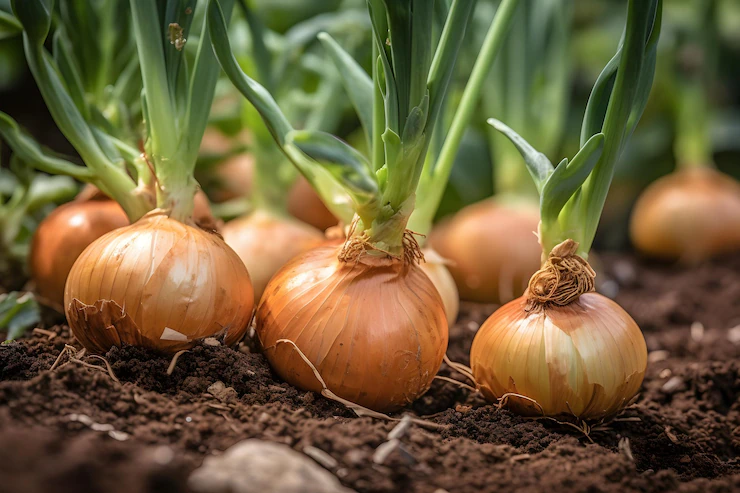When growing onions in South Africa, there are a few infections and diseases that you should watch out for to ensure a healthy crop. Here are some common ones:
- Onion White Rot (Sclerotium cepivorum): This is a soil-borne fungal disease that affects onions. It causes white, fluffy growth on the bulbs and can lead to decay. Crop rotation, proper sanitation, and using disease-free seed are essential for prevention.
- Downy Mildew (Peronospora destructor): This fungal disease thrives in cool and humid conditions. It appears as pale green or yellow patches on the leaves, which later turn brown. Good airflow, proper spacing, and fungicide treatments can help manage downy mildew.
- Pink Root (Phoma terrestris): Pink root is a fungal disease that causes discoloration and rotting of onion roots. It can lead to stunted growth and yield reduction. Crop rotation, using resistant varieties, and ensuring well-drained soil can help prevent pink root.
- Botrytis Leaf Blight (Botrytis squamosa): This fungal disease affects the leaves and causes small, water-soaked lesions that turn brown. It thrives in cool and wet conditions. Proper spacing, good airflow, and fungicide applications can help control botrytis leaf blight.
- Smut (Urocystis cepulae): Smut is a fungal disease that affects onion bulbs, causing black, powdery masses on the outer layers. Infected bulbs become deformed and may not store well. Crop rotation and using disease-free seed can help prevent smut.
- Thrips (Thrips tabaci): Thrips are tiny insects that feed on onion leaves, causing silvering or white patches. They can also transmit viruses, such as onion yellow dwarf virus. Regular monitoring, insecticidal soaps, and reflective mulches can help manage thrips.
- Onion Maggots (Delia antiqua): Onion maggots are small fly larvae that feed on onion bulbs, causing damage and rot. Crop rotation, insect netting, and avoiding excess moisture in the soil can help prevent infestations.
It’s important to regularly inspect your onion crop for signs of infection or disease. Early detection and appropriate management practices, such as cultural controls, crop rotation, and targeted pesticide applications, can help minimize the impact of these issues and ensure a successful harvest. Consulting with local agricultural extension services or experts can provide region-specific advice for disease management in South Africa.
Join 'Farmers Mag' WhatsApp Channel
Get the latest Farming news and tips delivered straight to your WhatsApp
CLICK HERE TO JOIN






